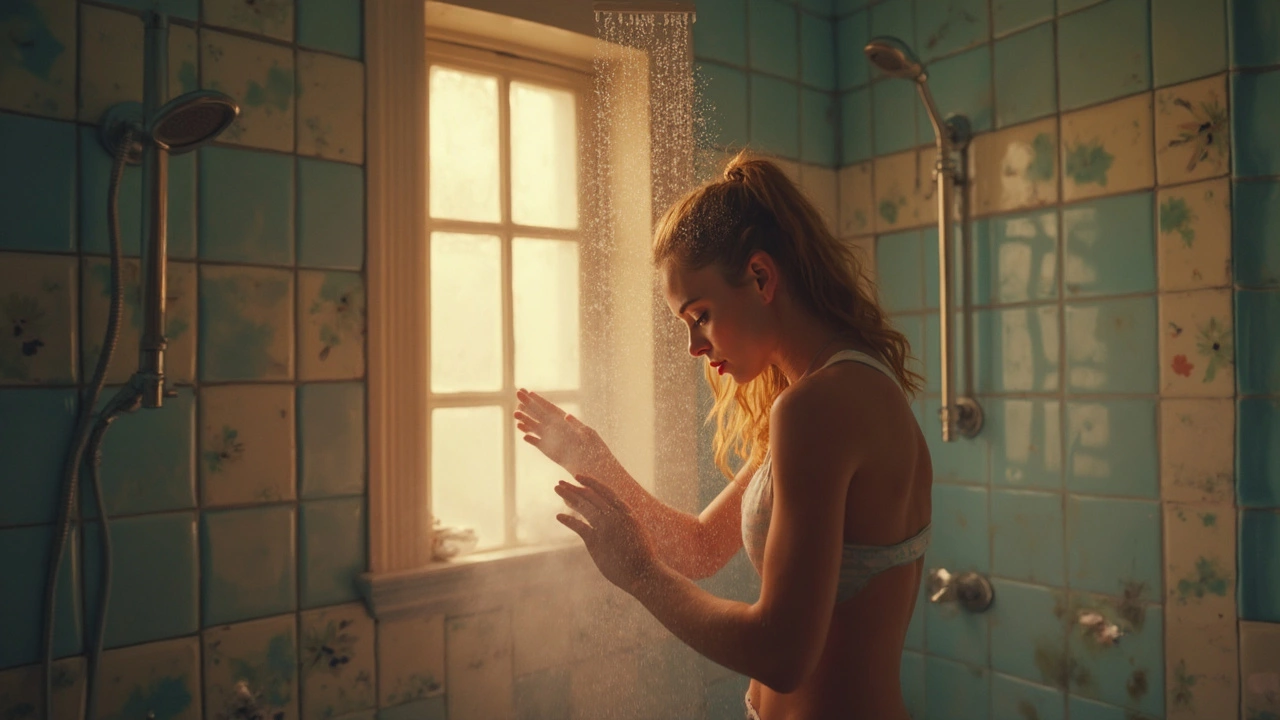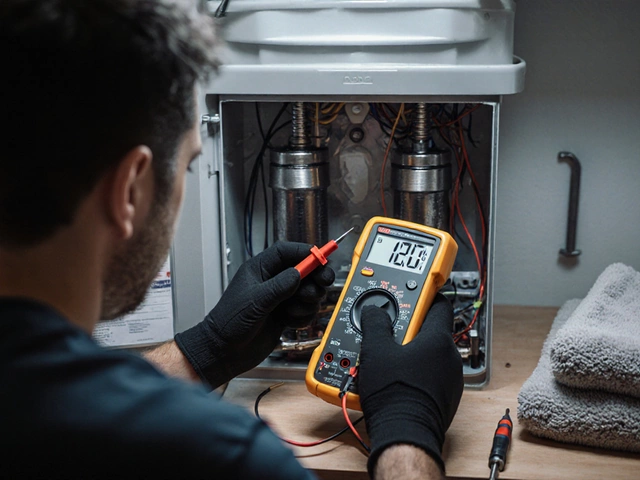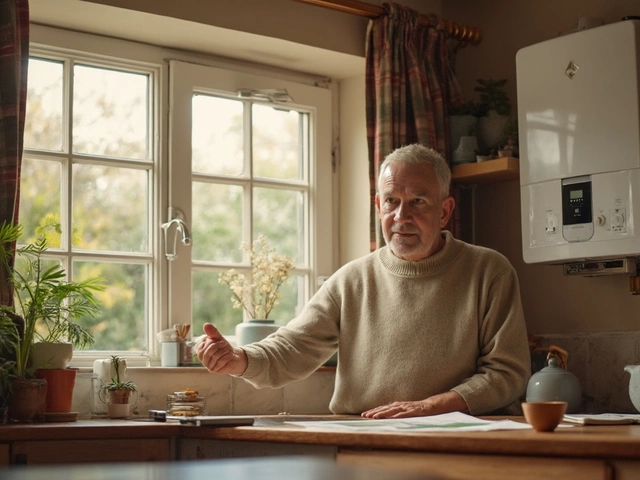Ever stepped into the shower expecting a toasty retreat, only to be jolted awake by icy water? We've all been there, and it's never pleasant. But before you decide to bunk with relatives just for a warm shower, let's troubleshoot what's going on.
First off, check the temperature setting on your water heater. Sometimes, the thermostat gets accidentally shifted, especially if your heater is tucked away in a bustling area like a garage. Setting it to about 120 degrees Fahrenheit usually hits the sweet spot for shower comfort without scalding anyone.
Next up, consider if you've been neglecting the water heater. Sediment can build up in the tank over time, especially in areas with hard water. Flushing the tank might just be the fix you need. It sounds complicated, but it’s not too different from draining a noodle pot.
- Common Culprits Behind Cold Showers
- Thermostats and Settings
- Water Heater Maintenance Tips
- When to Call a Professional
- Preventing Future Problems
Common Culprits Behind Cold Showers
You hop in, ready for that comforting warm spray, but instead, you're met with a shock of cold water. It can seriously ruin your morning, right? Let’s break down what might be causing this frigid surprise.
The first suspect in our lineup is the water heater itself. If your heater runs on electricity, a tripped circuit breaker might be the issue. Head over to your breaker box and give it a quick check to make sure everything's where it should be.
If electricity isn't the problem, look at the heater's pilot light (assuming it's a gas model). Sometimes, it goes out due to drafts or a malfunctioning thermocouple. These components are crucial for keeping your water heater's flame alive.
Another possibility? Your hot water usage could be maxing out the tank. The shower might have just swallowed the last of the warm water if you've got a smaller tank that serves a bustling household. Consider if you've got laundry running or if a few folks just took long, hot showers before you.
Then there’s the mineral buildup in the tank, something folks in hard water areas know all too well. Over time, those pesky sediments can reduce the heater's efficiency, making it harder to maintain the right water temperature.
Last but not least, leaks are sneaky culprits. A busted hot water line might be sending that warmth elsewhere rather than your showerhead. Take a look around your heater's surroundings for any damp spots or puddles.
By checking these common issues step-by-step, you can often zero in on the problem without needing a professional. But, if the issue seems above your pay grade, don't hesitate to call someone in.
Thermostats and Settings
When your shower's more arctic blast than tropical paradise, a wonky thermostat could be the villain in your hot water drama. Thermostats on most water heaters are usually pretty straightforward. They're designed with dials that let you adjust the temperature—kind of like setting your oven, but without the cookies. If everyone in the house is working their appliances overtime, your water heater might struggle to keep up, too. That's why checking the thermostat should be your first move.
First, locate the thermostat. Typically, electric water heaters have two thermostats: one on the top and one on the bottom. Each regulates different heater zones. Gas heaters usually have just one. To access the thermostat, you'll have to remove a panel or cover, possibly with a screwdriver. Make sure the power to the heater is off before poking around in there; nobody wants to end their DIY session with a new 'shocking' story.
Here's what you need to do:
- Turn off the power to the water heater at the main circuit breaker.
- Remove the thermostat's access panels carefully.
- Use a flat-head screwdriver to adjust the temperature settings. Set it to around 120 degrees Fahrenheit; it’s a great all-around setting, minimizing scalding risks while providing adequate hot water.
- Replace the panels and turn the power back on.
If you've made adjustments and still getting no hot water, there might be an issue with a thermostat malfunction, especially in electric water heaters. At that point, it might be smart to bring in some pro help.
Remember, tweaked settings mean a warmer shower, but they can also impact your utility bill. According to the Department of Energy, lowering your water temperature a mere 10 degrees could slice your water heating costs by 3-5%, which doesn’t sound huge, but it adds up over the year.
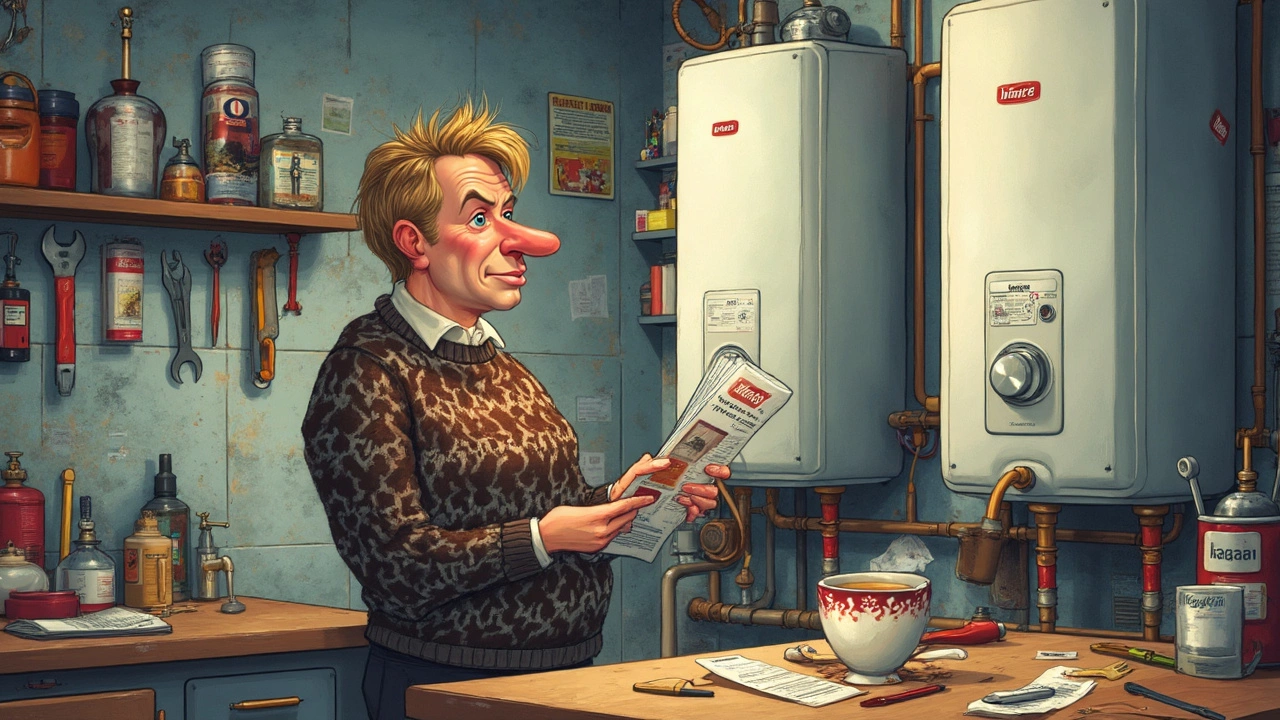
Water Heater Maintenance Tips
So, you want to keep your water heater in tip-top shape and avoid those surprise cold showers? Regular maintenance is key. It's not as daunting as it sounds, and a few simple steps can save you from future headaches.
First off, safety first. Always turn off the power or gas supply to your water heater before starting any maintenance. Trust me; it's better safe than sorry.
Next, make a habit of flushing your tank every six months. This helps clear out sediment buildup that can reduce heating efficiency and might even lower your water pressure. Here's a quick rundown on how to do it:
- Turn off the power or set the gas valve to ‘Pilot.’
- Attach a hose to the tank’s drain valve.
- Run the hose to a safe drainage point, somewhere the hot water won’t cause damage.
- Open a hot water tap somewhere in the house to help the tank empty faster.
- Open the drain valve and let the tank empty completely.
- Close the valve, remove the hose, and refill by opening the water heater's cold water supply.
- Finally, turn the power or gas back on.
Another thing you should keep an eye on is the anode rod. This little hero prevents rust inside your water heater. Check it every couple of years, and if it looks like it's worn through, replace it to avoid a rusty tank.
"Anode rods should be replaced every one to three years, depending on water quality," says Matt Risinger, a professional builder known for his expertise.
Also, don’t ignore any persistent noises or leaks. These could be warning signs telling you something needs attention. Tighten plumbing connections, and look out for any water pooling around the unit.
Lastly, consider a professional inspection once a year. A quick check-up by a pro can spot issues you might miss, ensuring everything's running smoothly.
Remember, a little maintenance goes a long way in making sure your hot water stays hot and your showers stay enjoyable.
When to Call a Professional
Sometimes, DIY troubleshooting just doesn't cut it, and it's crucial to know when to bring in the big guns. If you've tried tinkering with settings and maintenance, but your shower is still giving you the cold shoulder, it might be time to call a pro.
One key sign that you need expert help is if your water heater is leaking. Water pool at the base? That's not just annoying—it's a major red flag. A professional will not only fix the leak but also check for underlying issues that could cause bigger problems down the line.
Another reason to get professional assistance is when you hear strange noises coming from the heater. Cracking, popping, or rumbling often means built-up sediment hasn't been flushed properly and could require a more thorough approach. A specialist knows exactly how to handle this without damaging the tank.
Additionally, if your hot water supply is dwindling faster than usual, the issue might be with a failing heating element or a malfunctioning thermostat. Swapping these out isn’t always a straightforward task, especially in modern systems, and a professional has the tools and know-how to do it safely and efficiently.
Finally, consider getting expert help if your heater is relatively new but underperforming. Many newer models come with warranties that could be voided by DIY fixes. Keeping things legit with a professional repair ensures you don't lose out on warranty benefits.
Hot water issues can escalate quickly, but knowing when to call a professional can keep your home running smoothly—and your showers nice and warm.
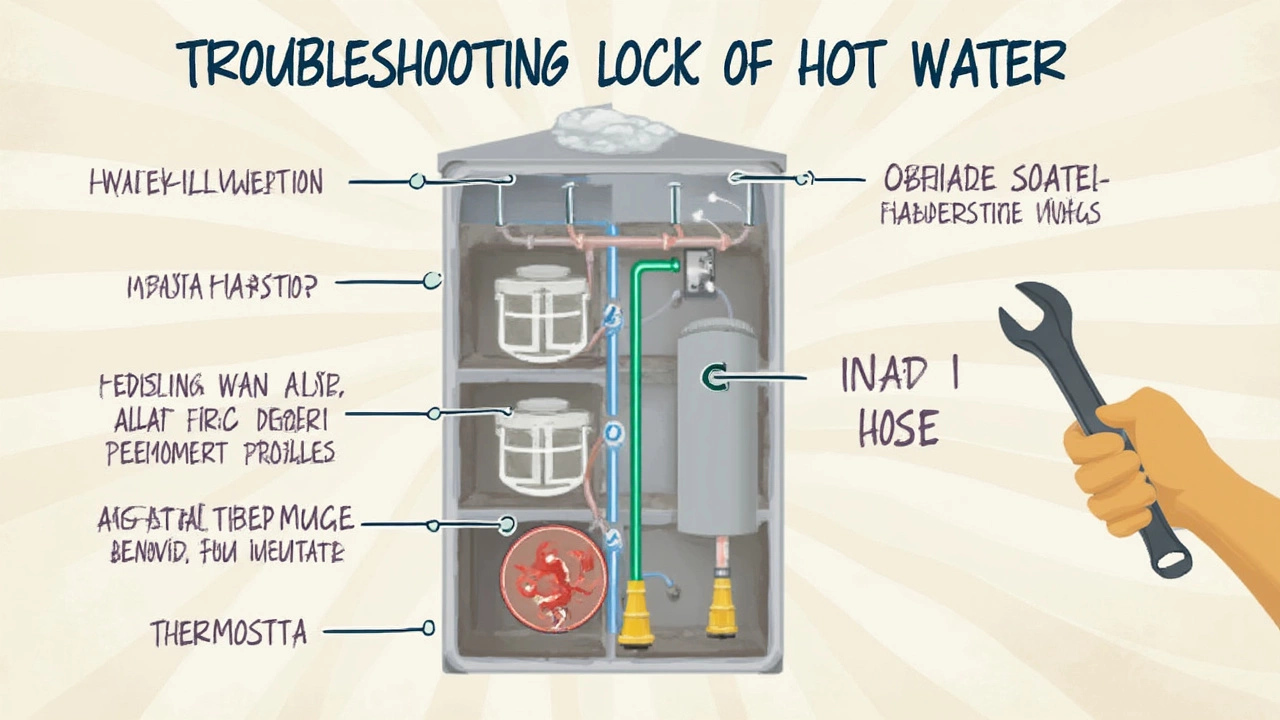
Preventing Future Problems
Alright, so you've sorted the no hot water problem for now, but what about keeping things smooth in the future? Nobody wants regular cold shower surprises, right? Prevention is your best friend here. Let's get into some ways you can keep those hot water issues at bay.
First off, make a habit of regularly checking the water heater's thermostat. Keep it set at a consistent temperature, typically around 120 degrees Fahrenheit, to avoid the scalding risk and save on energy bills. It's also a good idea to test the thermostat at least once a year to ensure it's still accurate.
Another crucial task is flushing your water heater tank annually or bi-annually. Sediment build-up is no joke; it can lead to rust or blockages, which decrease efficiency and lifespan. A flushed tank not only extends the heater's life but also maintains optimal heating.
Keeping an eye on your anode rod can also save you from a world of issues. This unsung hero prevents rust from building up in your tank. Generally, it needs to be replaced every 3 to 5 years, but checking it yearly is smart.
Check for any corrosion or leaks in the pipes around the water heater too. This little inspection can prevent bigger headaches later. When your plumbing seems funky, don't hesitate to call in a professional.
Here's a quick-Birdseye table view of a regular maintenance schedule:
| Task | Frequency |
|---|---|
| Flush tank | Annually |
| Check thermostat | Annually |
| Inspect anode rod | Every 1-3 years |
If you stay on top of these simple maintenance points, you'll ward off most nagging shower problems. Plus, you're not just ensuring hot water; you're also enhancing the efficiency and longevity of your setup. Now that’s a win-win.

